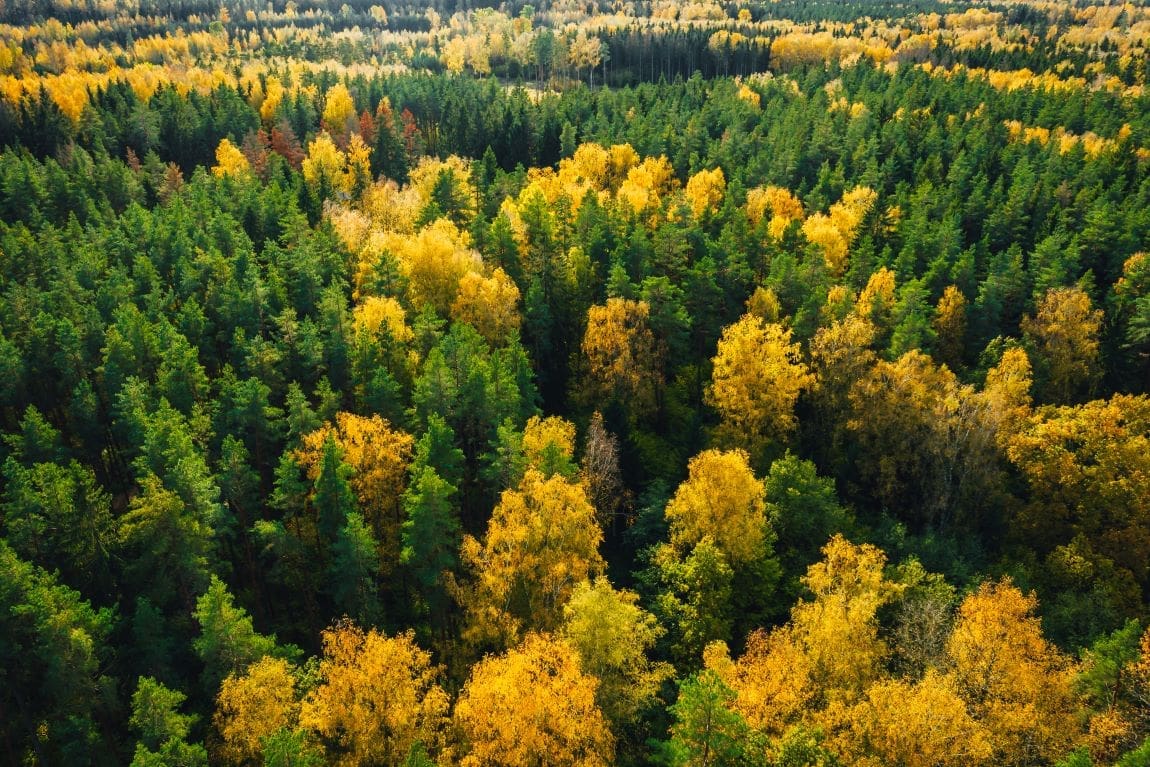Reforestation efforts to restock depleted forests are important for addressing climate change and for both capturing and restoring carbon from the Earth’s atmosphere. These types of solutions to mitigate carbon emissions are critical after 2023 proved to be the warmest year on record. However, some models have been found to be inaccurate.
New research from Michigan State University has found the carbon removal potential of some reforestation models have been over exaggerated — and not by a small factor — but by as many as three times of a factor. The goal set by the Paris Agreement in 2015 for countries to limit their global warming to 1.5 degrees is now close to being surpassed.
Runsheng Yin is a professor in the Department of Forestry in the College of Agriculture and Natural Resources, where he specializes in the evaluation of ecosystem services, ecological restoration and general natural resource economics and policy.
Yin has published new research identifying that carbon-capture models have not factored in what happens to the timber after trees are logged.
“The climate crisis is heightening, with 2023 representing the warmest year on record,” Yin said. “Nature-based solutions have an important role to play in helping us stem the worst impacts of climate change — but rigorously assessed methods to reliably offset and reduce greenhouse gas emissions could not be more urgent. As the practice becomes increasingly monetized, it is crucial that the accounting is done accurately.”
Yin examined a pine field in the Southern United States that is managed quite intensely. People or businesses can receive carbon credits when they reduce, avoid or remove greenhouse gas emissions.
He found tat the amount of carbon offset credits a landowner can receive is exaggerated by a factor of at least 2.76, indicating the carbon reduced is not as efficient as previously thought. This research indicates that this over calculation represents forestation beyond that pine field.
Specifically, the amount of time it takes for carbon to return to the atmosphere post-logging can differ depending on different wood products, whether that is paper, plywood or furniture. These types of wood degrade at different rates, and carbon must be stored for a specific time period for credits to be earned.
Alternatively, there also can be an issue when forests are kept intact, since people do not always consider the holding costs and the ability to use wood in lieu of fossil fuels, according to Yin.
“My research shows that its potential may not be as great as some analysts have claimed,” said Yin, when referring to carbon capturing. “That’s because existing studies have largely failed to conform to the accounting principles of the Paris Agreement, treat timber and carbon as joint products appropriately and consider how long each of the resulting wood products will store its carbon.”
The finding signals the need for more accurate and specific assessments for carbon storage, specifically, calculating the amount of time carbon that’s stored in wood products will last before returning to the atmosphere.
Forests will continue to play an important role in carbon sequestration, and companies should be encouraged to invest in reforestation to minimize carbon emissions — including receiving financial incentives.
Therefore, Yin recommends strengthening national and international efforts and even creating necessary programs to handle the assessment of carbon capturing. His research warns that it will not be enough to remove the amount of carbon created in timber, and these actions — which are so important — must receive the proper jurisdiction and evaluation of their effectiveness.
This article by Michigan State University is republished under a Creative Commons Attribution 4.0 International License. Read the original article.
(More information: Runsheng Yin, Global Forest Carbon, Book (2024); DOI: 10.4324/9781003436652. Featured image credit: wirestock – Freepik.com)




